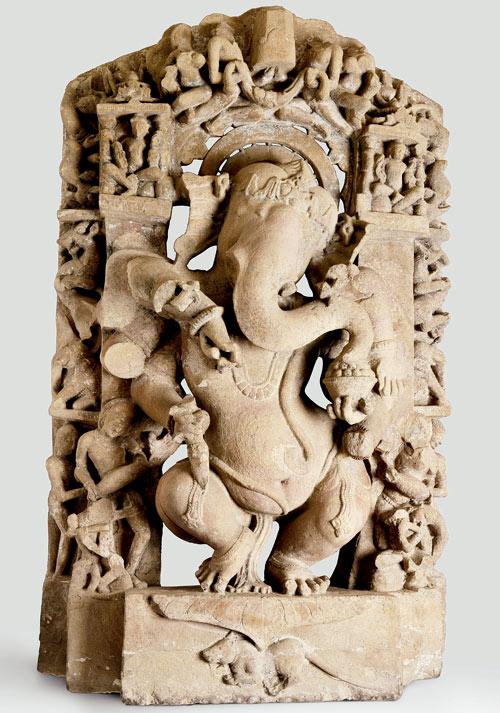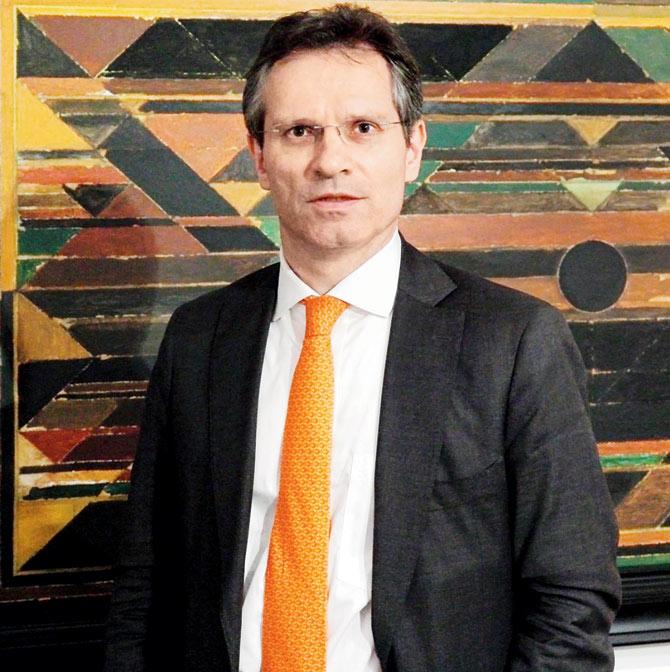Say those behind upcoming auctions; modernist paintings preferred to Indian classical art

A 32.75 inches tall bronze statue of the goddess Parvati is one of the highlights at SaffronArt’s Indian antiquities auction to be held on December 14.

A bronze Parvati from the Vijayanagara empire
ADVERTISEMENT
The sculpture, was part of the Vijayanagara Empire and was once belonged to the collection of SK Bhedwar, the architect of the Art Deco Eros Cinema. If these, you think, are enough reasons for a demand for this supple goddess, that is not the case.

A dancing sandstone Ganesha from the 10th century
It is estimated between Rs 80 lakh and Rs 1.2 crore, a fraction of the amount fetched by Indian modernist and contemporary paintings. That sculptures and miniatures dating back centuries would be every collector's pride rather than works by late 20th century artists is not the market formula.
 Hugo Weihe
Hugo Weihe
William Robinson, Christie's international head of world art, points to the “the interest in a brand. A Gaitonde or a Raza is easily recognisable.” Robinson is in town for Christie’s third India Sale scheduled for December 15, which spells a similar story for classical Indian art.
A sandstone dancing Ganesha from 10th century Madhya Pradesh has a pre-sale value of Rs 60 to Rs 70 lakh. SH Raza’s Bindu (1983), on the other hand, sits royally at a pre-sale value of Rs 10 to Rs 15 crore. But Robinson says that the market for Indian classical art is no different from its Western counterparts.
The old masters, such as Raphael and Rubens, fall behind Picasso and Van Gogh. Many believe that the culprit in this plot is the Antiquities and Art Treasure Act (1972), which prevents the export and international trade of Indian artworks, including coins and sculptures, that are more than 100 years old.
The Act brought the shutters down in the local trade of antiquities, since it expects owners to register their prized classical possessions with the Archaeological Survey of India (ASI). The international buyer is unimpressed.
But not all are anxious. Jagdish Mittal, artist and co-founder of Hyderabad’s Jagdish and Kamla Museum of Indian Art, has been collecting classical art for the last 65 years. “While the Antiquities Act may be seen as a setback, the government should create a market in the country.
Incentives need to be given to collectors, otherwise the market will go underground,” he says. Collectors in New York, for example, save millions of dollars in federal taxes by donating art (and even money) to museums and foundations.
Will tax benefits pave the path for Indian collectors to acquire and donate Indian antiquities to museums? In Robinson’s view, Indian museums would benefit more from monetary donations to be able to invest in the display of these treasures and safeguarding their cultural heritage for the next generations.
But, the market is looking better for Indian classical art, says Hugo Weihe, the CEO of SaffronArt, for he senses “a great pent-up demand among Indian collectors.” “It is important to build connoisseurship and a market for heritage here in India, especially in view of the extraordinarily rich history of more than 5,000 years.
It has been under-valued for too long. There is also a strong interest to bring antiquities back into the country. We can take a lesson from China, where the highest price tags are for Chinese classical art,” he said. Mittal agrees stating that this was the first time he had seen such prices for classical sculptures and miniatures.
“Let’s hope they succeed,” he says. If final bids outdo pre-sale estimates, there could well be a time in the future that Husains and Souzas have to watch out for a dancing sandstone Ganesha.
 Subscribe today by clicking the link and stay updated with the latest news!" Click here!
Subscribe today by clicking the link and stay updated with the latest news!" Click here!







